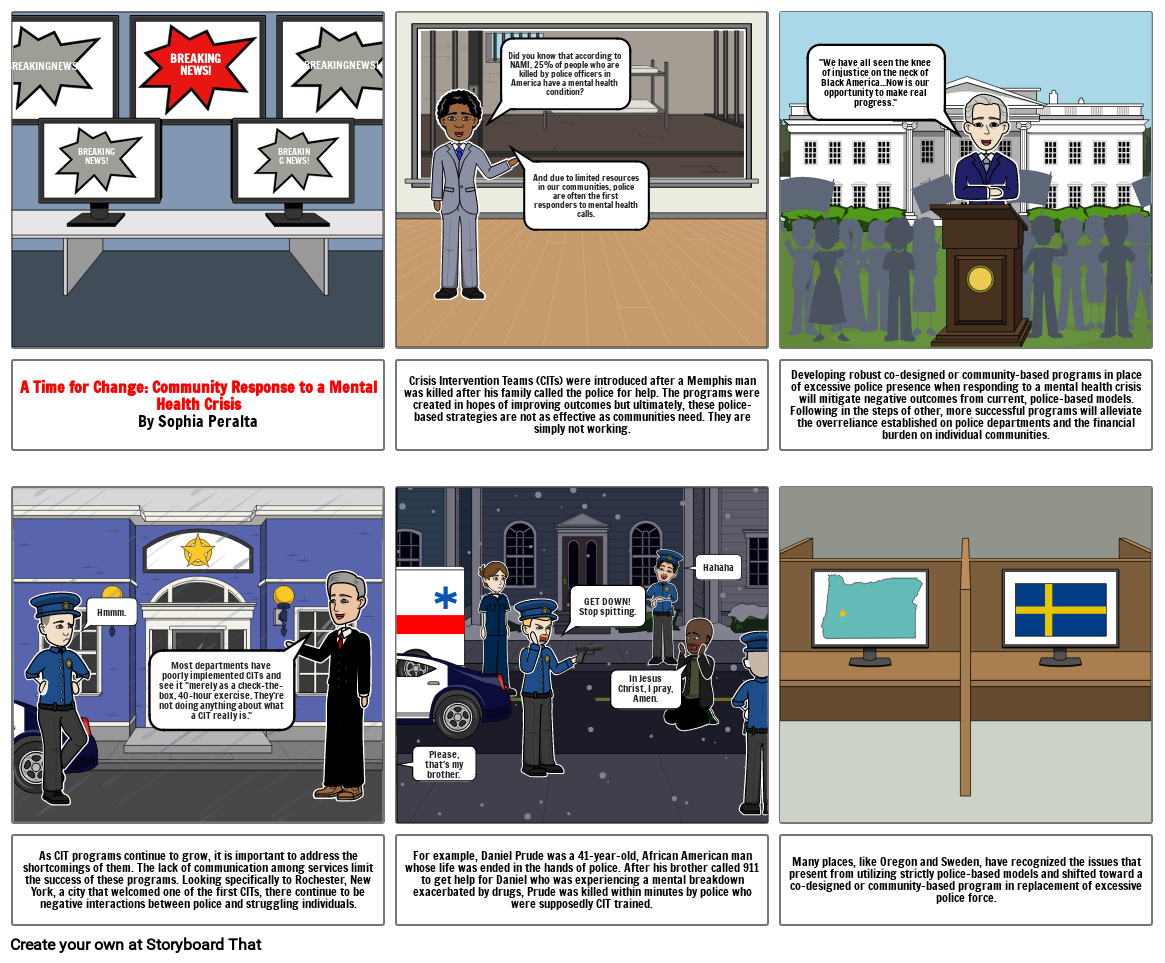Changing the Way We Respond to a Mental Health Crisis

Storyboard Text
- BREAKINGNEWS!
- BREAKING NEWS!
- BREAKING NEWS!
- BREAKING NEWS!
- BREAKINGNEWS!
- Did you know that according to NAMI, 25% of people who are killed by police officers in America have a mental health condition?
- And due to limited resources in our communities, police are often the first responders to mental health calls.
- "We have all seen the knee of injustice on the neck of Black America...Now is our opportunity to make real progress."
- A Time for Change: Community Response to a Mental Health CrisisBy Sophia Peralta
- Hmmm.
- Most departments have poorly implemented CITs and see it "merely as a check-the-box, 40-hour exercise. They're not doing anything about what a CIT really is."
- Crisis Intervention Teams (CITs) were introduced after a Memphis man was killed after his family called the police for help. The programs were created in hopes of improving outcomes but ultimately, these police-based strategies are not as effective as communities need. They are simply not working.
- GET DOWN! Stop spitting.
- In Jesus Christ, I pray, Amen.
- Hahaha
- Developing robust co-designed or community-based programs in place of excessive police presence when responding to a mental health crisis will mitigate negative outcomes from current, police-based models. Following in the steps of other, more successful programs will alleviate the overreliance established on police departments and the financial burden on individual communities.
- As CIT programs continue to grow, it is important to address the shortcomings of them. The lack of communication among services limit the success of these programs. Looking specifically to Rochester, New York, a city that welcomed one of the first CITs, there continue to be negative interactions between police and struggling individuals.
- Please, that's my brother.
- For example, Daniel Prude was a 41-year-old, African American man whose life was ended in the hands of police. After his brother called 911 to get help for Daniel who was experiencing a mental breakdown exacerbated by drugs, Prude was killed within minutes by police who were supposedly CIT trained.
- Many places, like Oregon and Sweden, have recognized the issues that present from utilizing strictly police-based models and shifted toward a co-designed or community-based program in replacement of excessive police force.
Over 30 Million Storyboards Created

